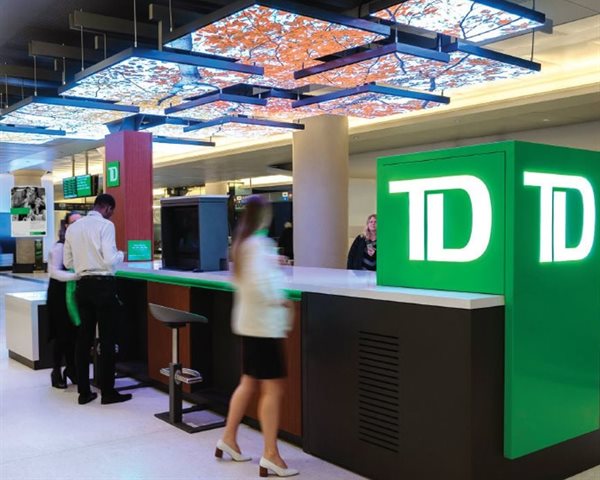
In the Shop! podcast Continuous Adaptation, a trio of experts addresses this need. Discussing continuous adaptation in retail and TD Bank’s strategies for evolving and thriving are Rachel Zsembery, VP with Bergmeyer Associates; Brian Perlow, senior associate with Bergmeyer; and Martha MacInnis, head of retail design and experience with TD Bank Group. Here are the highlights.
To constantly improve, retailers must be willing to publicly experiment with new ideas; they must also be willing to risk public failure, and learn from it.
TD Bank engages internal and external partners (e.g. real estate, technology, marketing, store development groups) in an ongoing dialogue about opportunities for improvement. When considering new concepts, the bank analyses industry trends to maximise its understanding of customer expectations and behavior.
The bank pilots new concepts in its existing branches and collects feedback from its regular customers. In response to this feedback, the bank tweaks its solutions in preparation for rollout across the network. TD Bank benchmarks itself against other banks, retailers and hospitality organisations; evaluation is as important as the initial execution.
In the financial services market, customer demand has shifted from transaction to advice. To more comfortably host in-depth conversations between customers and their bankers, TD Bank is designing its branches with a residential aesthetic that resembles a living room. The warm environment provides customers with the option of talking with their bankers on couches in an open, inviting space.
As ATMs increasingly handle transactions, the bank is experimenting with new, smaller models, including a digital advice bar; unused teller wickets are converted into areas to promote digital advice. As the store size and services change, staffing may shift from dedicated positions to more generalised roles in lobby leadership.
The need for additional branch sizes and configurations has impacted the bank’s real estate strategy. While the bank strives to find the perfect location in both established and developing communities, it’s equally focused on getting the right amount of space so that future branches can grow or shrink over time. In the design of a new location, the team considers how the space might eventually be divided and subleased in the future.
The branches are designed to be modular. The furniture and fixtures can be reconfigured to accommodate special events. TD Bank equips its branches with AV equipment technology for presentations by staff and guest speakers.
The bank is consulting a wider range of architects and employing a variety of archetypes to localise branches for specific markets. Design features (e.g. historical murals, graphics, and artifacts that incorporate local landmarks) are customised to reflect a branch’s neighborhood, and the bank’s sales set and community engagement are programmed to support the local customer demographic.
TD Bank has initiatives dedicated to sustainability and wellness. Its RFP for design sources includes corporate and social responsibility information that guides its selection of partners.
The company has more than 200 LEED-certified buildings in the United States. Its efforts to reduce energy consumption include installing programmable thermostats, converting interior and exterior lighting to LED, and remotely monitoring and controlling HVAC and lighting systems. At each location, signage identifies the sustainable and wellness attributes of the branch.
Customers’ needs – along with technology – are constantly evolving, and retailers must adapt their store designs and functions in response. Therefore, rather than pursue a "prototype of the future", retailers should focus on the "process of the future".
Excerpted from the Shop! podcast Continuous Adaptation. A podcast quiz is available for Shop! members for continuing education credit.